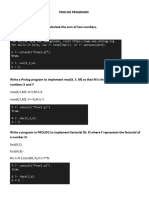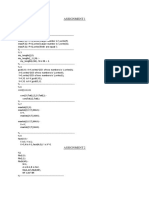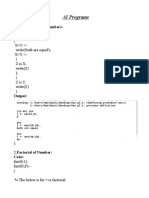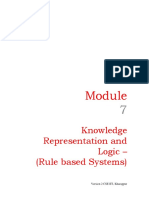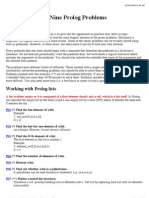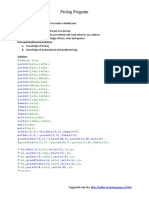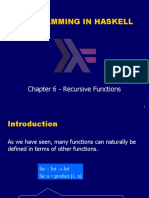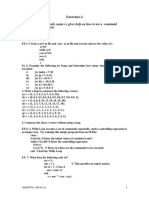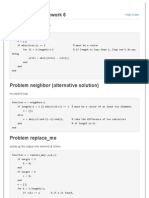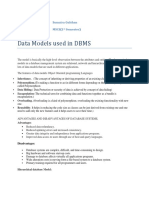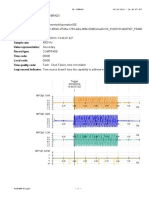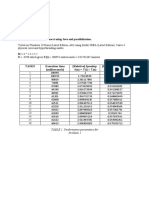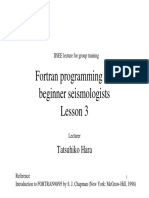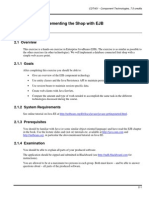0% found this document useful (0 votes)
10 views26 pagesPROLOG
The document contains a Prolog programming assignment with various tasks, including list manipulation functions such as printing elements, reversing lists, creating lists, calculating mean values, and detecting numbers in lists. It also covers functions for incrementing list elements, calculating factorials, appending lists, encapsulating elements, inserting zeros, cloning lists, modifying elements, rotating lists, generating Fibonacci numbers, creating random square matrices, and checking for membership in lists. Each task is accompanied by code snippets and expected outputs.
Uploaded by
Haswanth PetlaCopyright
© © All Rights Reserved
We take content rights seriously. If you suspect this is your content, claim it here.
Available Formats
Download as PDF, TXT or read online on Scribd
0% found this document useful (0 votes)
10 views26 pagesPROLOG
The document contains a Prolog programming assignment with various tasks, including list manipulation functions such as printing elements, reversing lists, creating lists, calculating mean values, and detecting numbers in lists. It also covers functions for incrementing list elements, calculating factorials, appending lists, encapsulating elements, inserting zeros, cloning lists, modifying elements, rotating lists, generating Fibonacci numbers, creating random square matrices, and checking for membership in lists. Each task is accompanied by code snippets and expected outputs.
Uploaded by
Haswanth PetlaCopyright
© © All Rights Reserved
We take content rights seriously. If you suspect this is your content, claim it here.
Available Formats
Download as PDF, TXT or read online on Scribd
/ 26


